For patients with osteoarthritis needing anticoagulation, a direct oral anticoagulant (DOAC) may be better than warfarin. A retrospective analysis of knee and hip replacements in patients with atrial fibrillation on anticoagulation therapy in the United Kingdom found that warfarin use has an odds ratio of 1.57 for knee and hip replacement compared to DOAC when adjusted for age and gender.
The risk for joint replacement appears to increase with longer duration of warfarin use, likely because warfarin antagonizes vitamin K-mediated gamma-carboxylation of dependent proteins, noted Priyanka Ballal, MD, fellow in training, Boston University School of Medicine. Inadequate vitamin K levels are associated with abnormal joint tissue mineralization and higher incidence and prevalence of OA. Vitamin K supplementation is associated with less OA progression in patients with a vitamin K deficiency.
Dr. Ballal opened Plenary Session II, which featured six presentations. Registered ACR Convergence 2020 attendees have on-demand access to watch a replay of the session through Wednesday, March 11, 2021.
“Patients with atrial fibrillation or other conditions that require anticoagulation who have OA or are at risk for OA should have a discussion about DOACs versus warfarin with their provider,” she advised. “We also need to examine the benefits of vitamin K supplementation in patients with OA.”
Anti-Blood Dendritic Cell Antigen 2 Antibody Improves SLE Outcomes

Type 1 interferons have long been implicated in the pathogenesis of systemic lupus erythematous (SLE). Autoreactive immune complexes bind to blood dendritic cell antigen 2 (BDCA2) receptors, which are expressed only on the surface of plasmacytoid dendritic cells (pDCs). These pDCs accumulate in the skin and other tissues of SLE patients, including the kidneys and secondary lymphoid organs, producing large amounts of INF-1s.
A novel humanized IgG1 monoclonal antibody, BIIB059, binds to BDCA2 and inhibits the production of pDC-derived IFN-1s, decreasing expression of IFN-response genes and IFN-modulated proteins in skin lesions. LILAC (NCT02847598), a Phase II trial of 450 mg of BIIB059 vs. placebo, showed significant improvement in active joint count after 24 weeks as well as improved SRI-4 response, reported Richard Furie, MD, chief of rheumatology, Northwell Health.
The trial randomized 120 patients to BIIB059 (64) or placebo (56), and about 90% completed the study, Dr. Furie said.
“We have seen very good cutaneous and joint response, and the separation started by week eight,” Dr. Furie said. “Adverse events and serious adverse events were balanced across the two arms.”
IL-16 a Practical Biomarker for Lupus Nephritis

A combination of urine proteomics and single cell transcriptomics has identified IL-16 as a novel and practical biomarker for lupus nephritis. Up to 70% of SLE patients have lupus nephritis, which has a high risk of kidney failure requiring dialysis, an eight-fold increase in mortality, and a low response rate to treatment.
“It is usually asymptomatic, and histology does not always capture changes in kidney function,” said Andrea Fava, MD, fellow in training, Johns Hopkins School of Medicine. “Most repeat biopsies—87%—lead to a change in treatment. We need a reliable biomarker.”
The Accelerating Medicines Partnership used urine proteomics to identify chemotaxis pathways enriched in proliferative lupus nephritis. IL-16 was highly correlated with histological activity, is independent of proteinuria, and is highly associated with decreased renal activity.
“We find abundant numbers of IL-16-positive cells at the sites of kidney injury in lupus nephritis,” Dr. Fava said. “This pro-inflammatory cytokine binds to many types of immune cells in the kidney and is strongly implicated in SLE. The data need to be confirmed in a larger study, which is underway, but it appears that IL-16 is a reliable, practical biomarker for lupus nephritis.”
Watch for Late Cardiovascular Events as Children with Kawasaki Disease Age to Early Adulthood

Kawasaki disease (KD) is an increasingly common pediatric vasculitis. Vascular symptoms typically resolve within a few weeks, but KD has become the most common pediatric acquired heart disease in developed countries. And while intravenous immunoglobulin (IVIG) administration can reduce coronary artery aneurysm risk, a retrospective cohort study revealed elevated risk for cardiovascular events and procedures extending at least into the early adult years.
Researchers analyzed Ontario provincial databases to identify and follow 4,597 children hospitalized for KD from 1995 to 2018. The median follow-up was 11 years.
Survivors of KD have an adjusted hazard ratio of 11.65 for any cardiac event in the year after diagnosis, falling to 1.39 more than 10 years later, said Cal Robinson, MD, fellow in training, The Hospital for Sick Children, Toronto, Ontario, Canada. The hazard ratio for a major cardiovascular event is 3.27 following KD diagnosis, falling to 1.17 a decade later.
The risk is higher for children who survived a coronary artery aneurysm. The hazard ratio for any cardiovascular event ranges from 33.12 the year after KD diagnosis to 2.13 ten years later.
“Patients and physicians need to be aware of the long-term cardiovascular implications of KD,” Dr. Robinson said. “Closer cardiovascular surveillance and prevention interventions are appropriate for KD survivors.”
Low C3/C4 Levels Before Pregnancy Associated with Worse Birth Outcomes

The presence of antiphospholipid syndrome (APS) or antiphospholipid antibodies (aPL) during pregnancy is associated with fetal complications, but the links have not been clear. A multicenter study of 461 pregnancies in Italy and Russia found that low levels of complements C3 and/or C4 before conception are associated with adverse pregnancy outcomes such as early miscarriage, fetal loss, or stillbirth.
Low preconception levels of C3/C4 are associated with loss of pregnancy compared to normal levels, said Cecilia Nalli, MD, Rheumatology and Clinical Immunology Unit, Speciali Civili and University of Brescia, Brescia, Italy. Low C3/C4 levels have no impact on live births nor on maternal complications including pulmonary embolism, deep vein thrombosis, or thrombocytopenia.
A subgroup analysis found that the risk for pregnancy loss is seen only in women with triple aPL positivity, with or without APS. Women with single or double aPL positivity are not at increased risk for adverse pregnancy outcomes.
“These tests are easy and cheap and can be routinely performed,” Dr. Nalli said. “They could represent a valid aid to identify women at risk for adverse pregnancy outcomes who need particular monitoring and management during their pregnancy.”
RA Patients in Sustained Remission on Combination Therapy Might Drop Methotrexate

Patients and clinicians have long wondered whether patients with rheumatoid arthritis in sustained remission on a combination of methotrexate and etanercept might be able to drop one of the two agents and maintain remission. A randomized, double-blind, controlled trial suggests they can, and that they should drop methotrexate and maintain etanercept, not drop the biologic and maintain methotrexate.
“Etanercept monotherapy is significantly more effective than methotrexate monotherapy in maintaining remission in patients who are in long-term, sustained remission on combination therapy,” said Jeffrey R. Curtis, MD, MS, MPH, Margaret Jones Harbert-Gene Bali Endowed Professor of Medicine, University of Alabama at Birmingham. “Similar proportions of patients maintained remission with etanercept monotherapy as with methotrexate/etanercept combination therapy.”
The ACR and EULAR both recommend tapering RA medication in patients with persistent remission, but guidelines do not clarify an optimal approach. SEAM-RA (Study of Etanercept And Methotrexate in Combination or as Monotherapy in Subjects with Rheumatoid Arthritis) compared the effect of withdrawing either methotrexate or etanercept on the maintenance of remission.
At week 48, 28.7% of methotrexate monotherapy patients remained in remission, compared with 49.5% on etanercept monotherapy. A similar percentage on combination therapy remained in remission. There was no difference between groups for patients who required rescue therapy to regain remission and no differences in adverse events.
“These data can inform decision making for patients and physicians seeking to reduce treatment burden in patients with well-controlled RA,” Dr. Curtis said.
